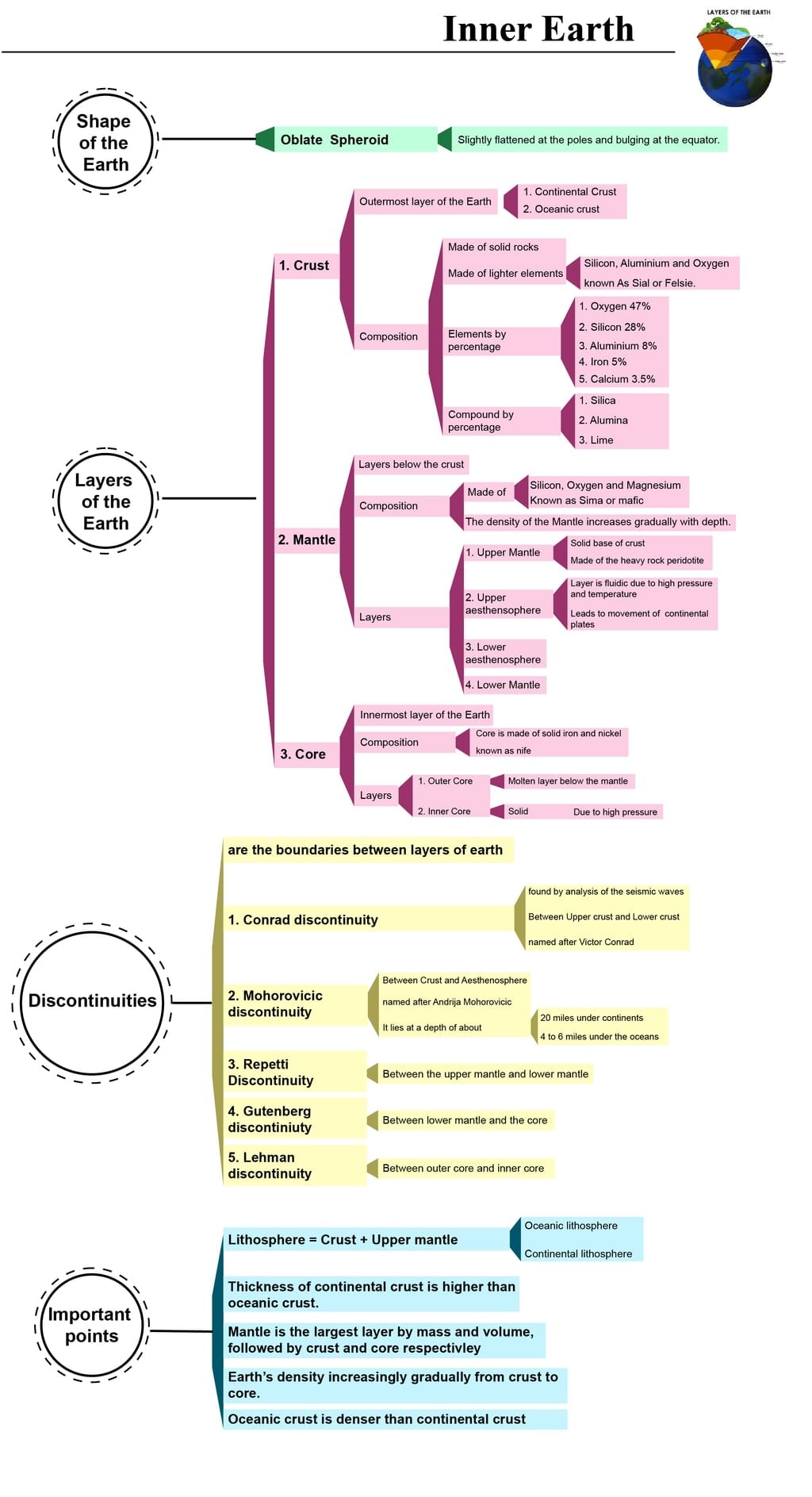UPSC Exam > UPSC Notes > Geography for UPSC CSE > Mind Map: Origin of Earth & its Interiors
Mind Map: Origin of Earth & its Interiors | Geography for UPSC CSE PDF Download


The document Mind Map: Origin of Earth & its Interiors | Geography for UPSC CSE is a part of the UPSC Course Geography for UPSC CSE.
All you need of UPSC at this link: UPSC
|
175 videos|619 docs|192 tests
|
FAQs on Mind Map: Origin of Earth & its Interiors - Geography for UPSC CSE
| 1. What is the origin of Earth? |  |
Ans. The origin of Earth can be traced back approximately 4.6 billion years ago when it formed from the solar nebula, a rotating disk of gas and dust left over from the formation of the Sun. Over time, the particles in the disk collided and stuck together, gradually forming larger bodies that eventually became the planets, including Earth.
| 2. How do scientists study the interiors of the Earth? |  |
Ans. Scientists study the interiors of the Earth through various methods. One common approach is through seismic waves, which are generated by earthquakes or artificially created explosions. These waves travel through the Earth and can be detected by sensitive instruments called seismographs. By analyzing the behavior of seismic waves, scientists can infer the composition, density, and structure of the Earth's interior.
| 3. What are the different layers of the Earth's interior? |  |
Ans. The Earth's interior is composed of several distinct layers. The outermost layer is the crust, which is relatively thin and composed of solid rock. Beneath the crust lies the mantle, a much thicker layer made up of solid but flowing rock. The core, located at the center of the Earth, is divided into two parts: the outer core, which is liquid due to high temperatures, and the inner core, which is solid due to extreme pressure.
| 4. How did the Earth's interior evolve over time? |  |
Ans. The Earth's interior has evolved over time through various processes. During its early formation, the Earth was a hot and molten mass. As it cooled, denser materials sank towards the center, forming the core, while lighter materials rose to the surface, contributing to the formation of the crust. The continuous movement of tectonic plates also plays a significant role in shaping the Earth's interior, causing volcanic activity, the formation of mountains, and the recycling of crustal material.
| 5. What role does the Earth's interior play in supporting life? |  |
Ans. The Earth's interior plays a crucial role in supporting life. The solid crust provides a stable surface for life to thrive, while the mantle and core generate the Earth's magnetic field, which protects the planet from harmful solar radiation. The dynamic processes within the Earth, such as plate tectonics, also regulate the climate, recycle nutrients, and create diverse habitats. Additionally, the heat from the Earth's interior drives geothermal activity, which can be harnessed for various purposes, including generating electricity and heating buildings.
Related Searches

















